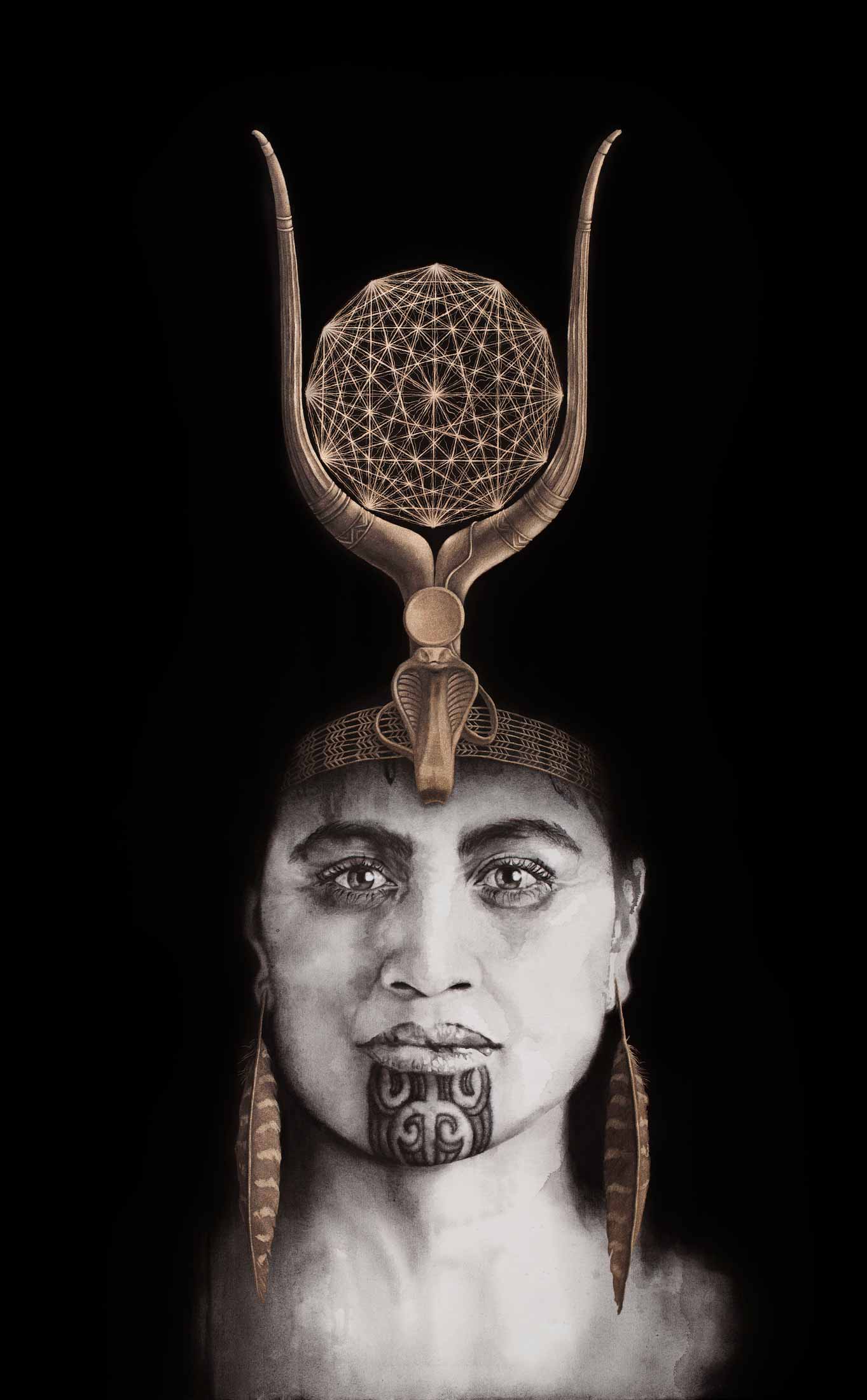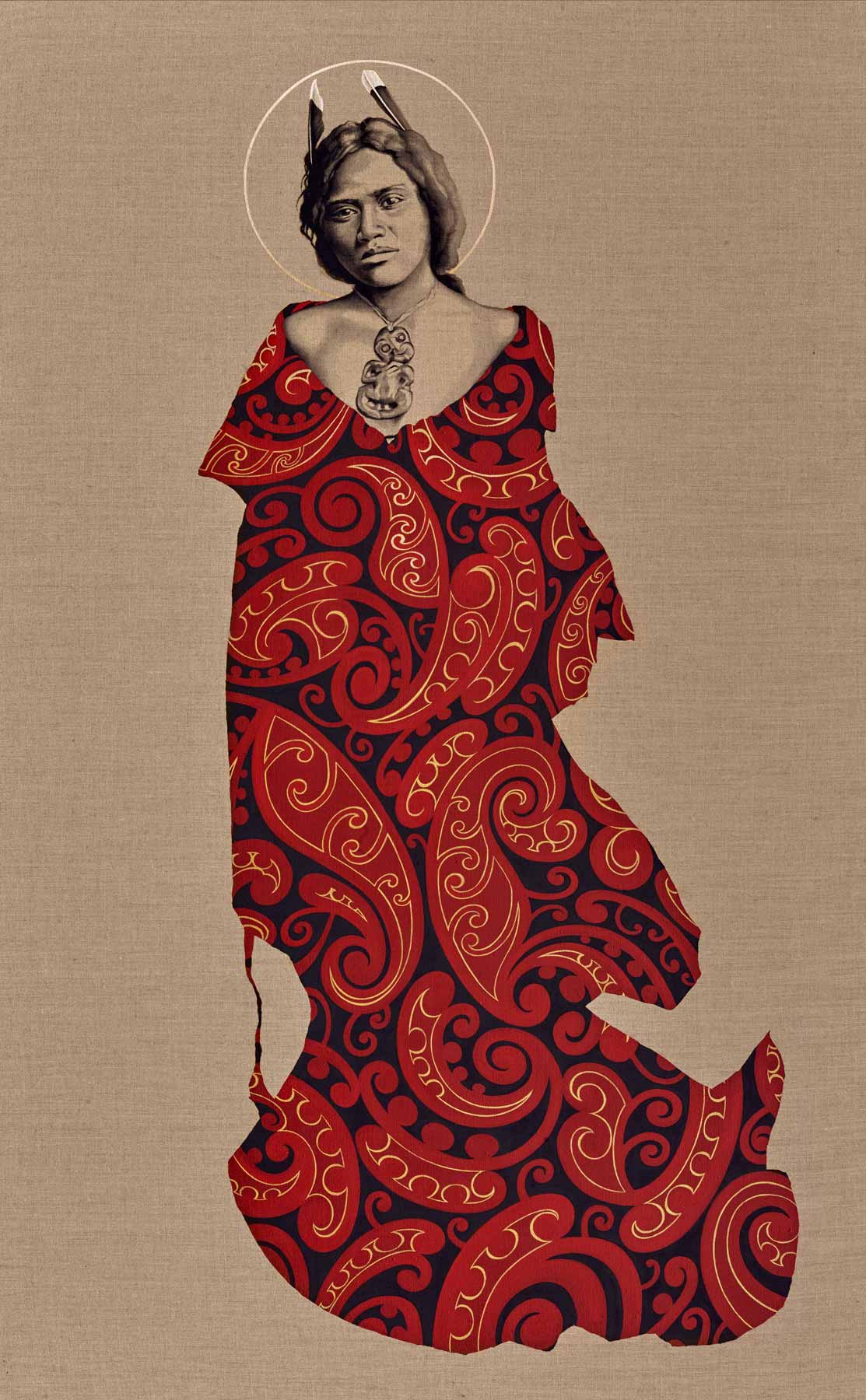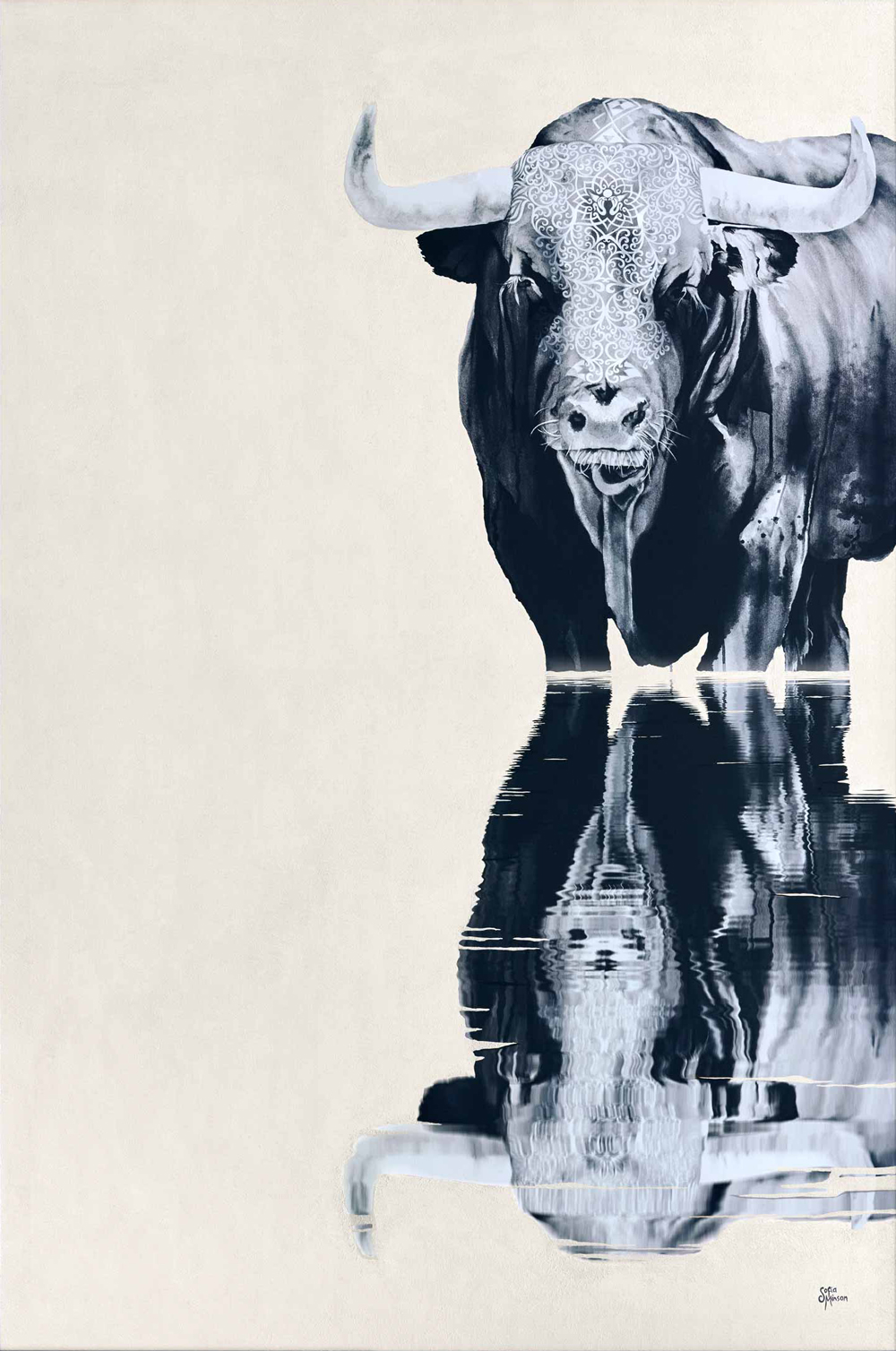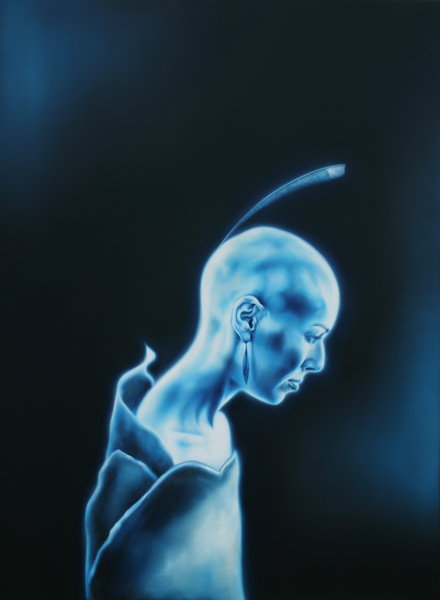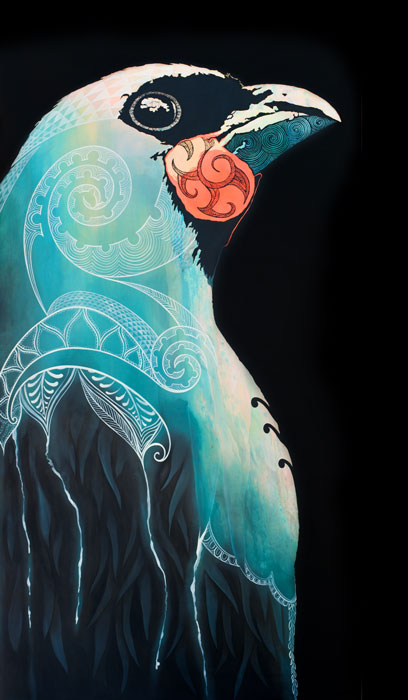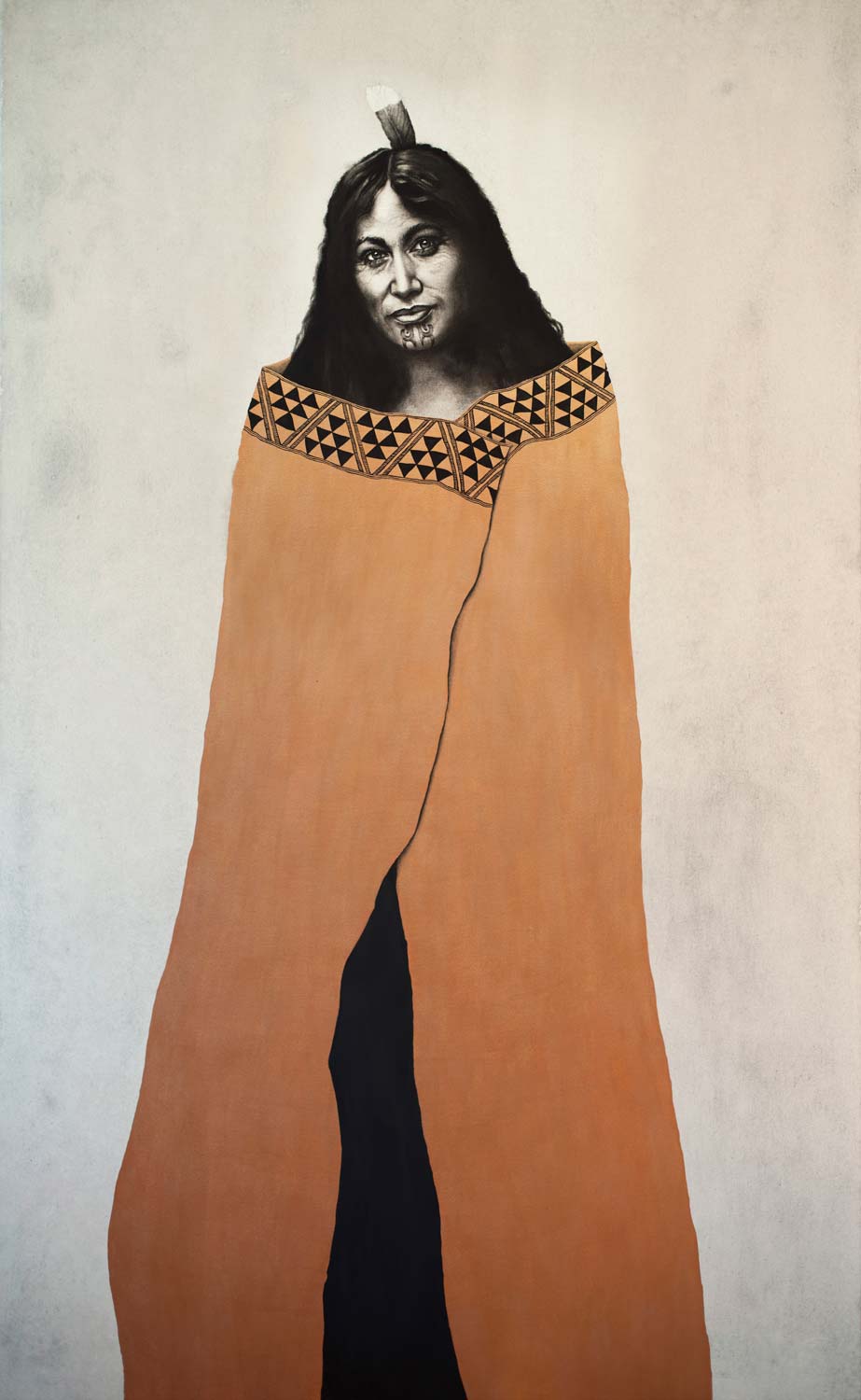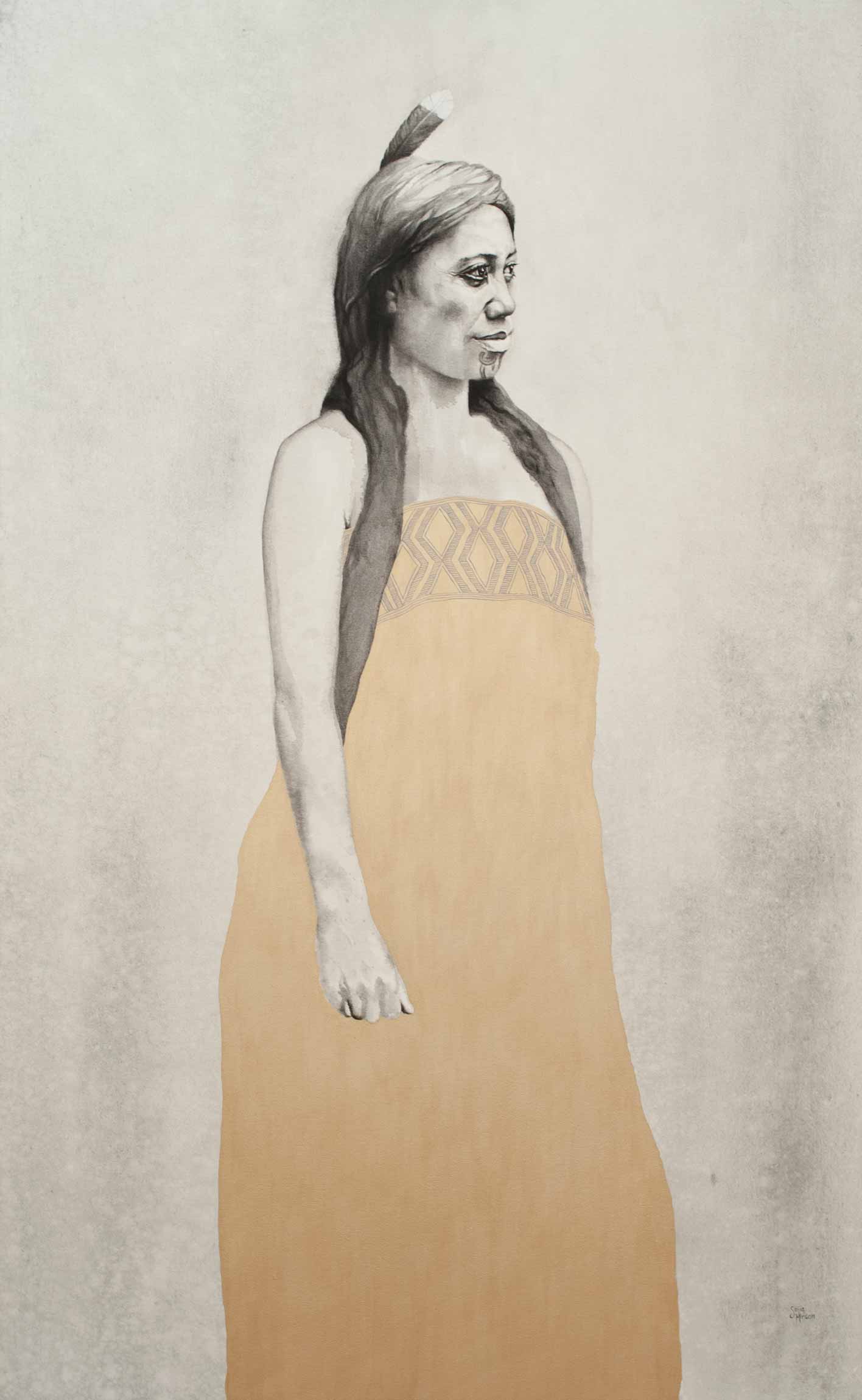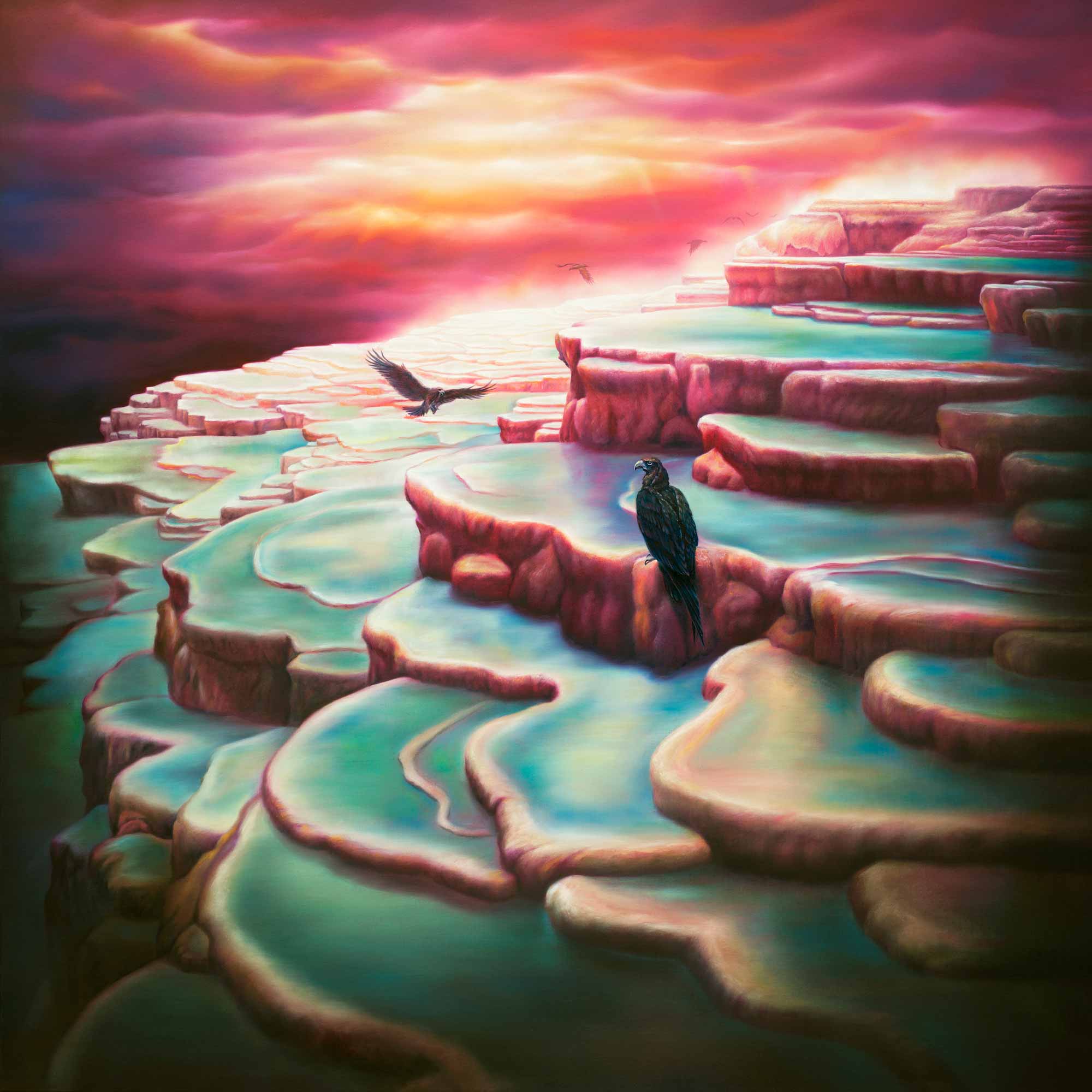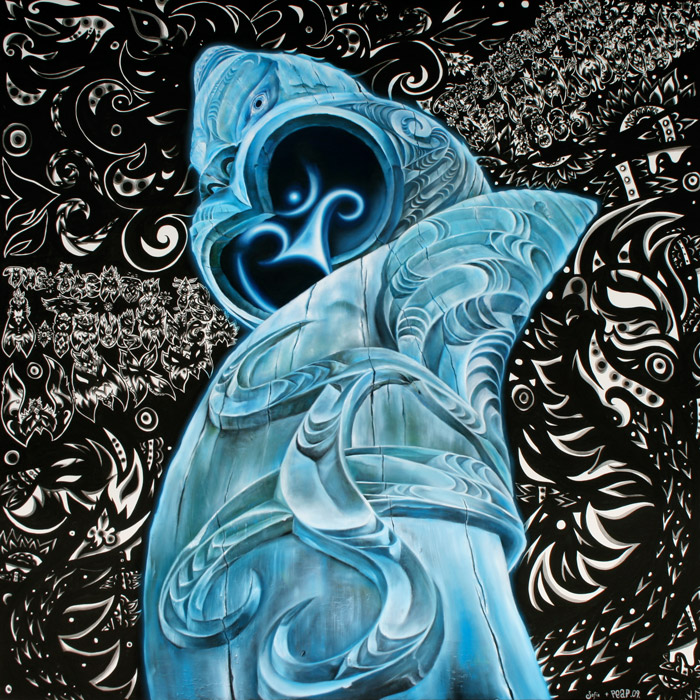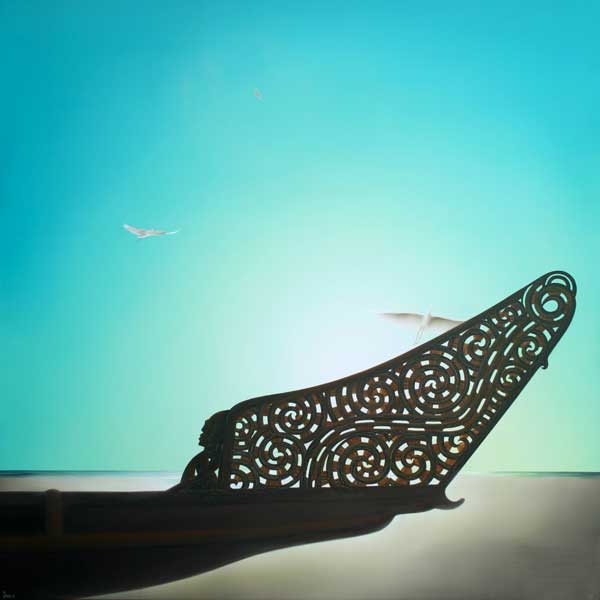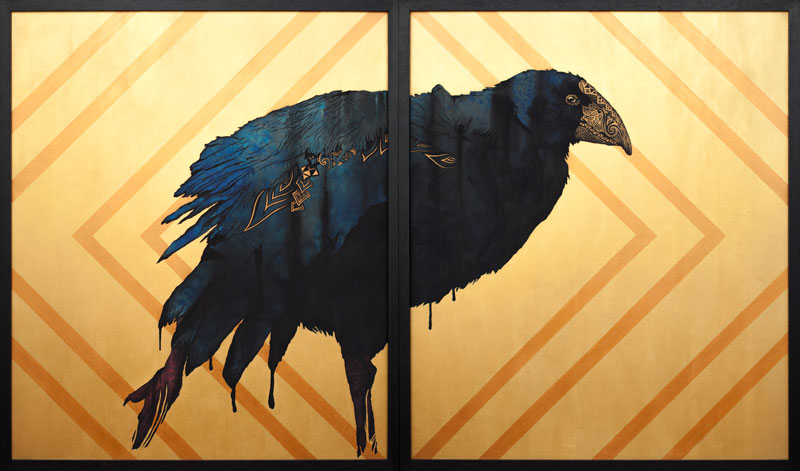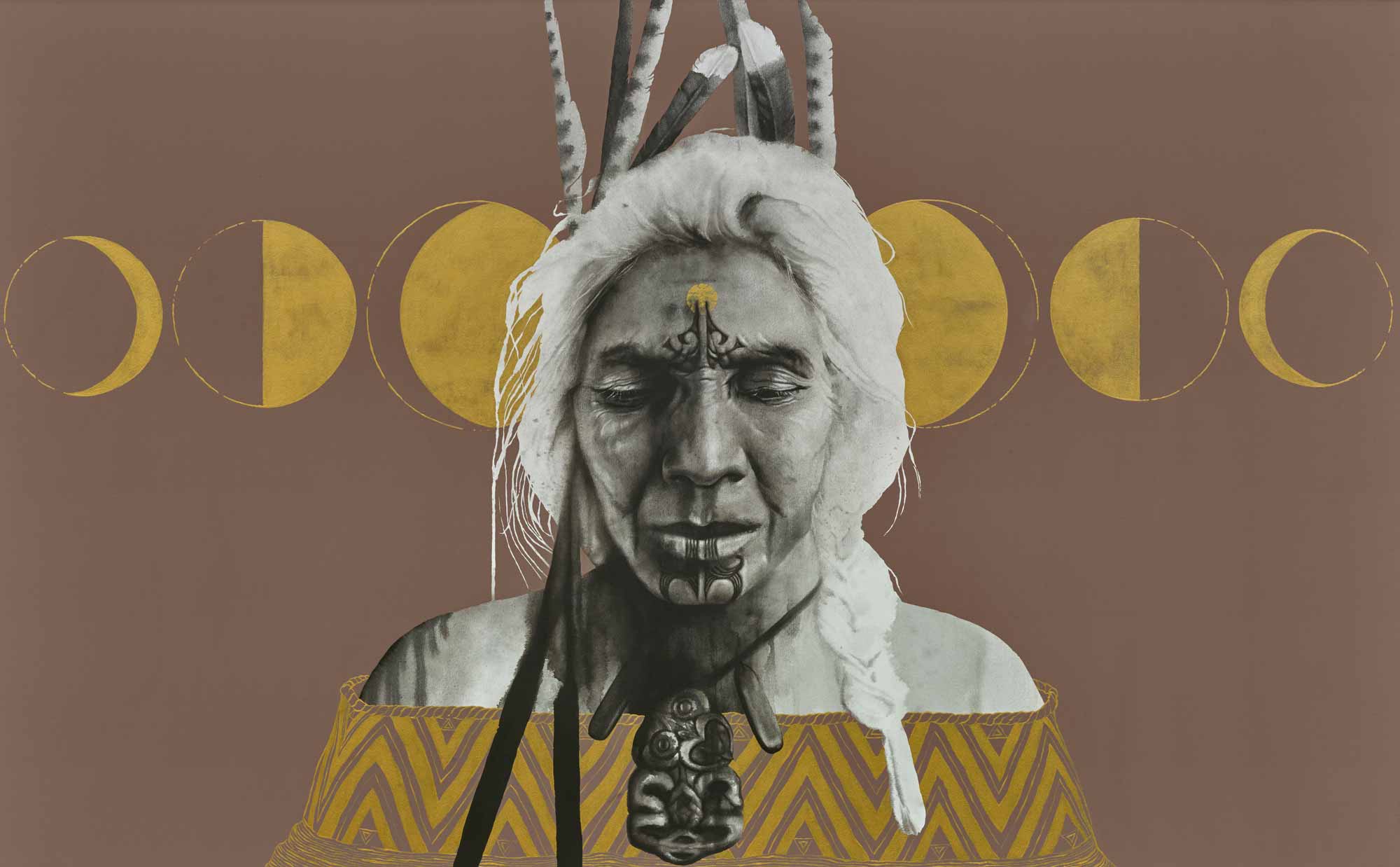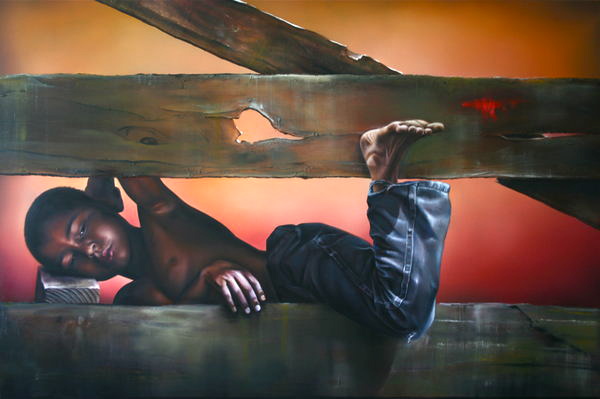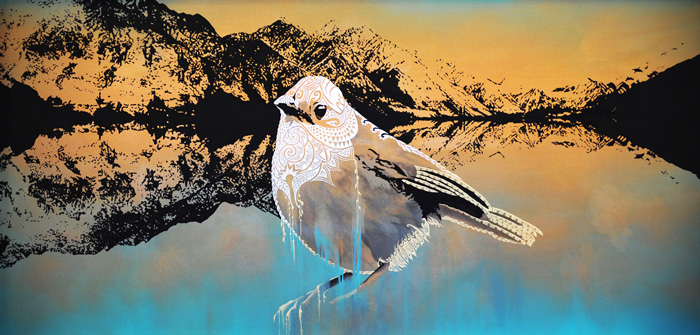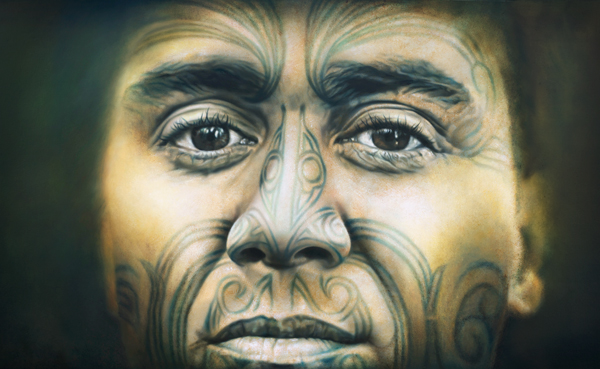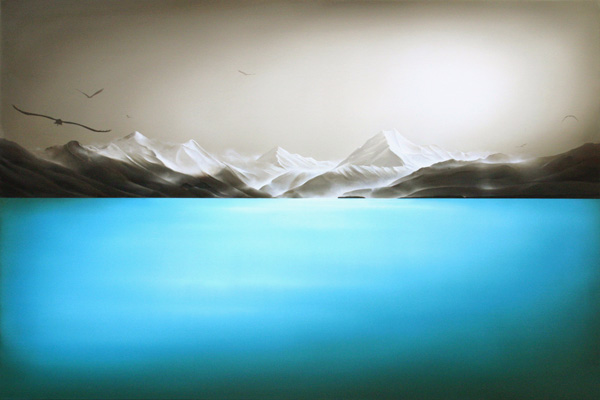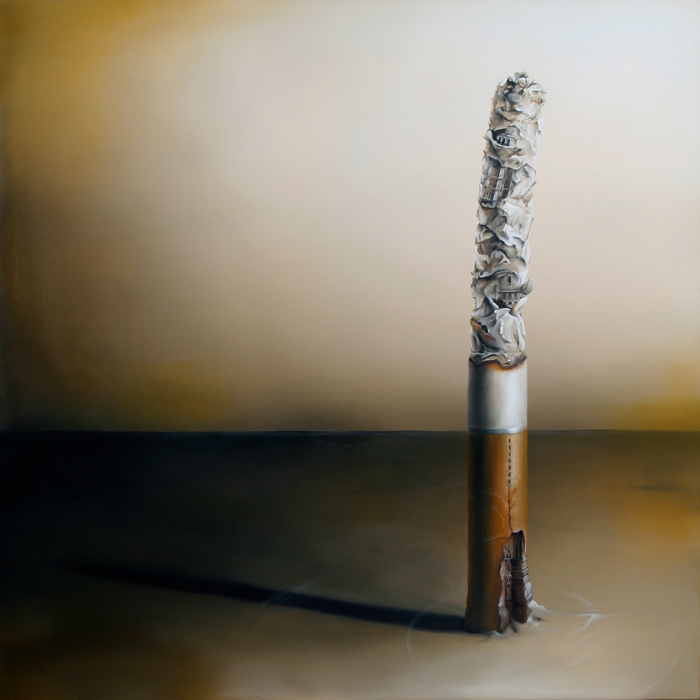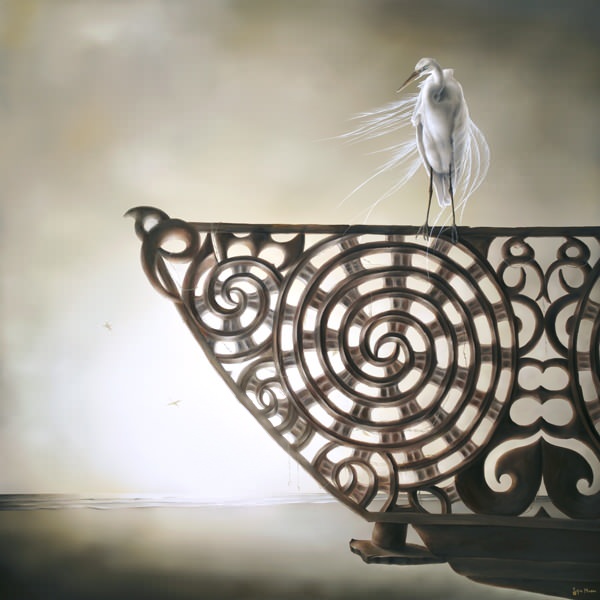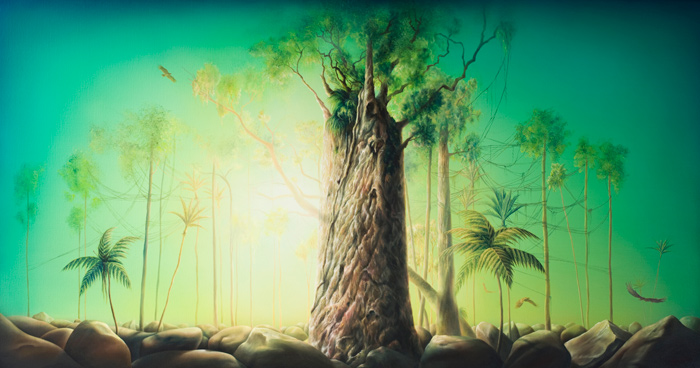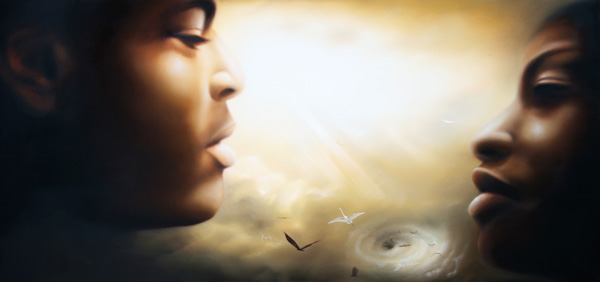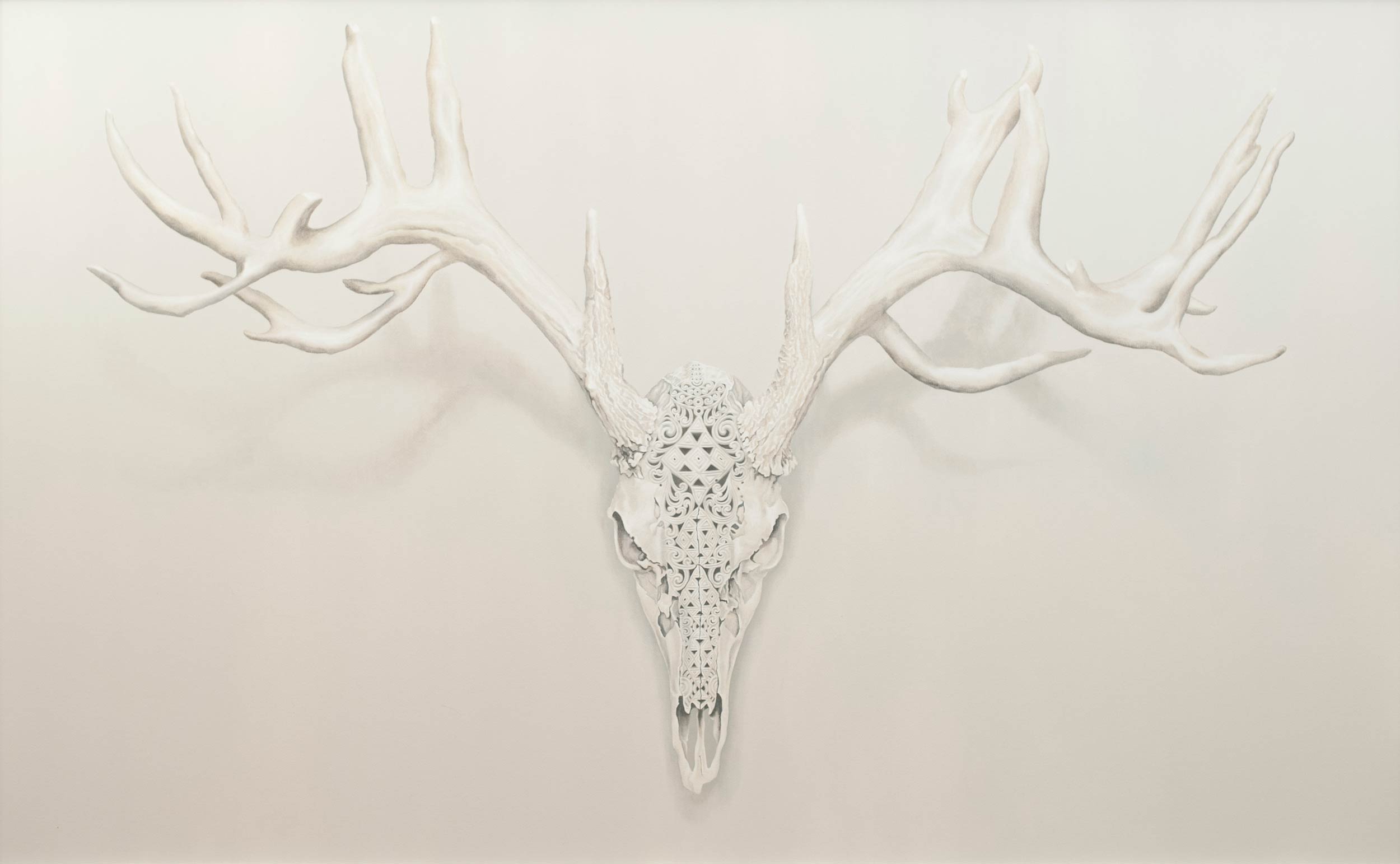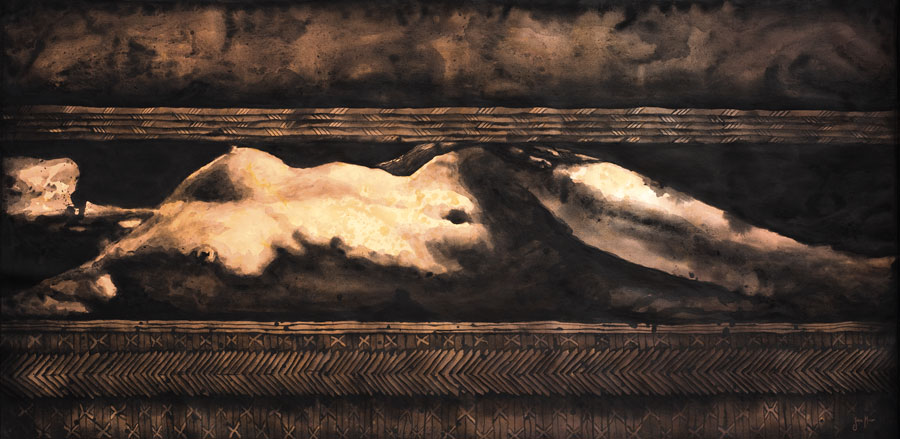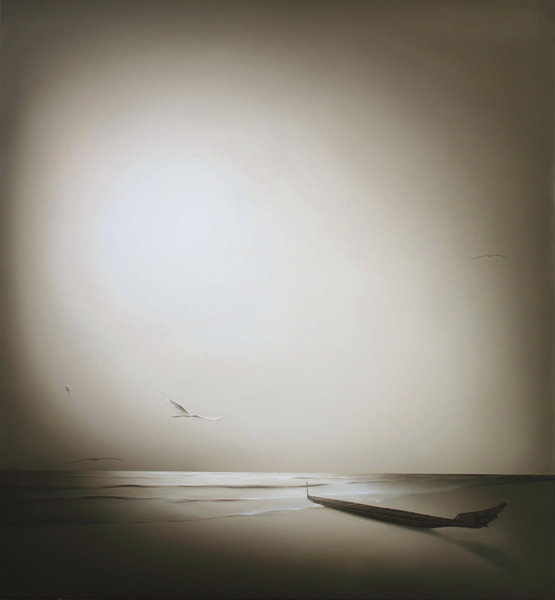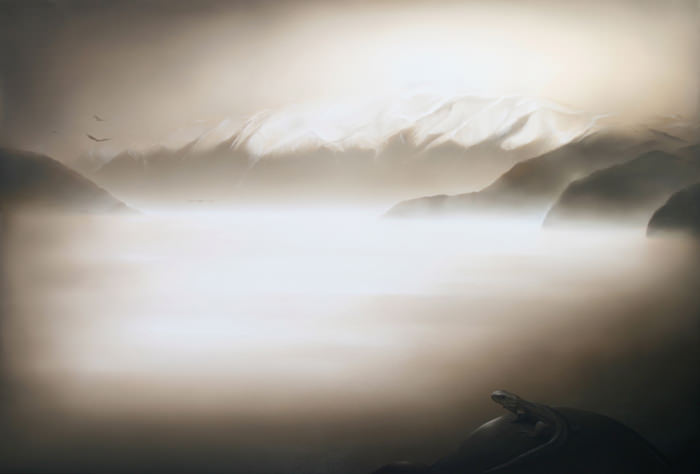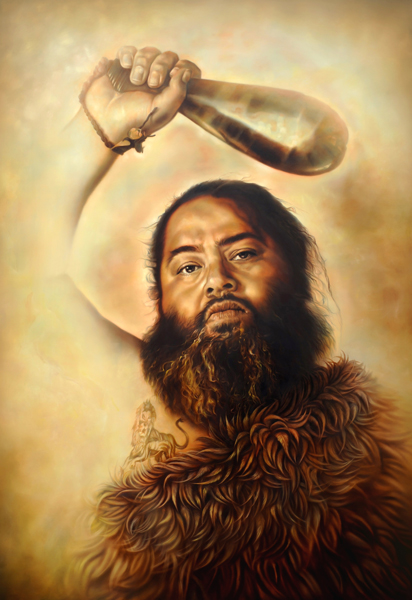"Only a special selection of my artworks are released as extra large canvas prints.
These make a really big impression on the wall!"
- Sofia Minson
Drawing on common myths and legends that unite us all, Sofia Minson's work is inspired by her Ngāti Porou Māori, Swedish, English, Scottish and Irish heritage.
Sofia has been capturing the imagination of discerning art buyers worldwide with her original paintings and prints for over 20+ years.
As an indigenous Māori artist from New Zealand, Sofia has the unique perspective of having lived in Samoa, China and Sri Lanka, and she has travelled extensively beyond.
With each brushstroke, she expertly weaves ancestral wisdom from around the world into images for a globally connected audience.
This universal appeal has lead to exhibitions in such prominent cultural centres as:
- New York
- Italy
- Turkey
- New Zealand - Auckland, Wellington and Queenstown
What is a limited edition canvas print?
Printed on quality canvas, these reproductions are so good, you can see the artist’s brushstrokes.
Made For You
- Sofia Minson has proofed the image in order to faithfully capture the essence of the original artwork.
- When you purchase a Sofia Minson canvas print, you are allocated a limited edition number that is unique to you.
- Your new artwork is hand signed and delivered in a protective art tube.

1-of-1 Repaint Limited Editions
Each repaint edition begins life as a high quality archival print from
Sofia Minson's existing artwork, reimagined by her hand.
Sofia carefully adds fresh layers of symbolism, texture, and depth, transforming these prints into entirely new artistic visions.
Neither purely prints nor entirely original canvases, repaint editions uniquely bridge the two worlds. Crafted on her existing limited-edition dimensions, these artworks offer collectors distinctive, intimate, and entirely unrepeatable pieces.
Each artwork tells a new story through Sofia’s renewed creativity for the piece.
These 1-of-1 Repaint Limited Edition are from
Sofia’s recent Waiora Series. Each artwork from the series is a unique, soulful expression reflecting the profound spiritual essence of wai - pure water and wellbeing.
Midnight Rose - Healing and Renewal
1-of-1 Repaint Limited Edition
Size: 1130 x 1130mm (framed)
Medium: Hand-painted over museum-quality canvas print
Only one available | NZ$28,750
Artwork currently on HOLD please contact us
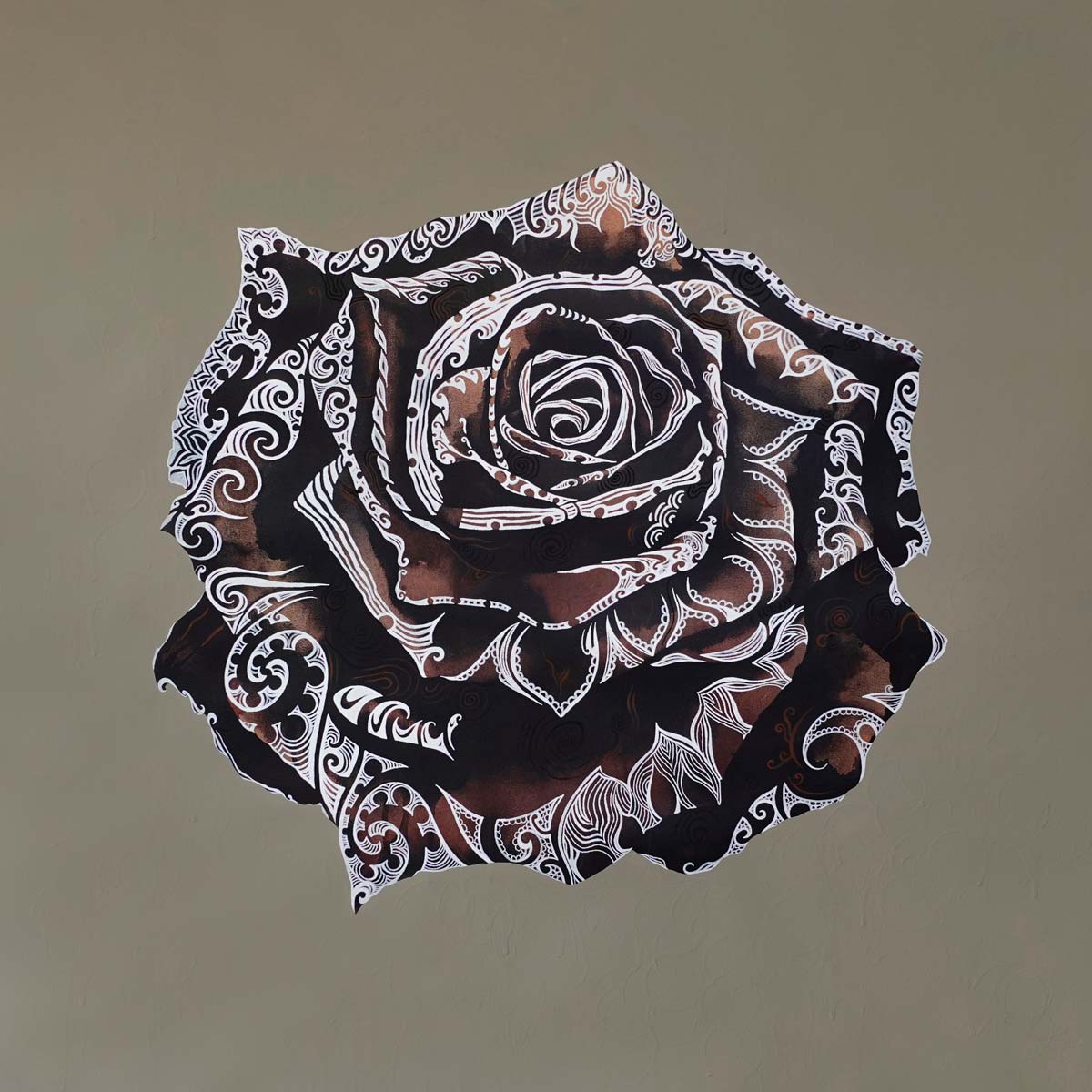
Midnight Rose: Healing and Renewal
Healing and Renewal
In this Waiora reinterpretation of Midnight Rose, Sofia Minson evokes themes of healing, renewal, and spiritual wellbeing through the delicate, unfolding petals of a rose.
Harmony of Motifs
Diverse motifs surround the rose, blending Māori, Pacific, and Eastern designs, including mandalas symbolising unity and universal harmony. Here, the rose signifies not only Sofia's diverse heritage (Ngāti Porou Māori, English, Scottish, Irish, and Swedish) but also embodies the essence of Waiora: pure water, spiritual wellbeing, and deep healing.
Cosmic Unfolding
The midnight essence of the rose aligns with Te Pō, the long night of creation in Māori cosmology. Emerging from the void (Te Kore), the rose blooms as a metaphor for growth, consciousness, and spiritual renewal, reflecting the ongoing cycles of creation, unfurling, and rebirth fundamental to the Waiora Series.
Add Midnight Rose - Healing and Renewal to your art collection
Aoraki Fractalis - Sacred Connections
1-of-1 Repaint Limited Edition
Size: 915 x 1095mm (unframed)
Only one available | NZ$28,750
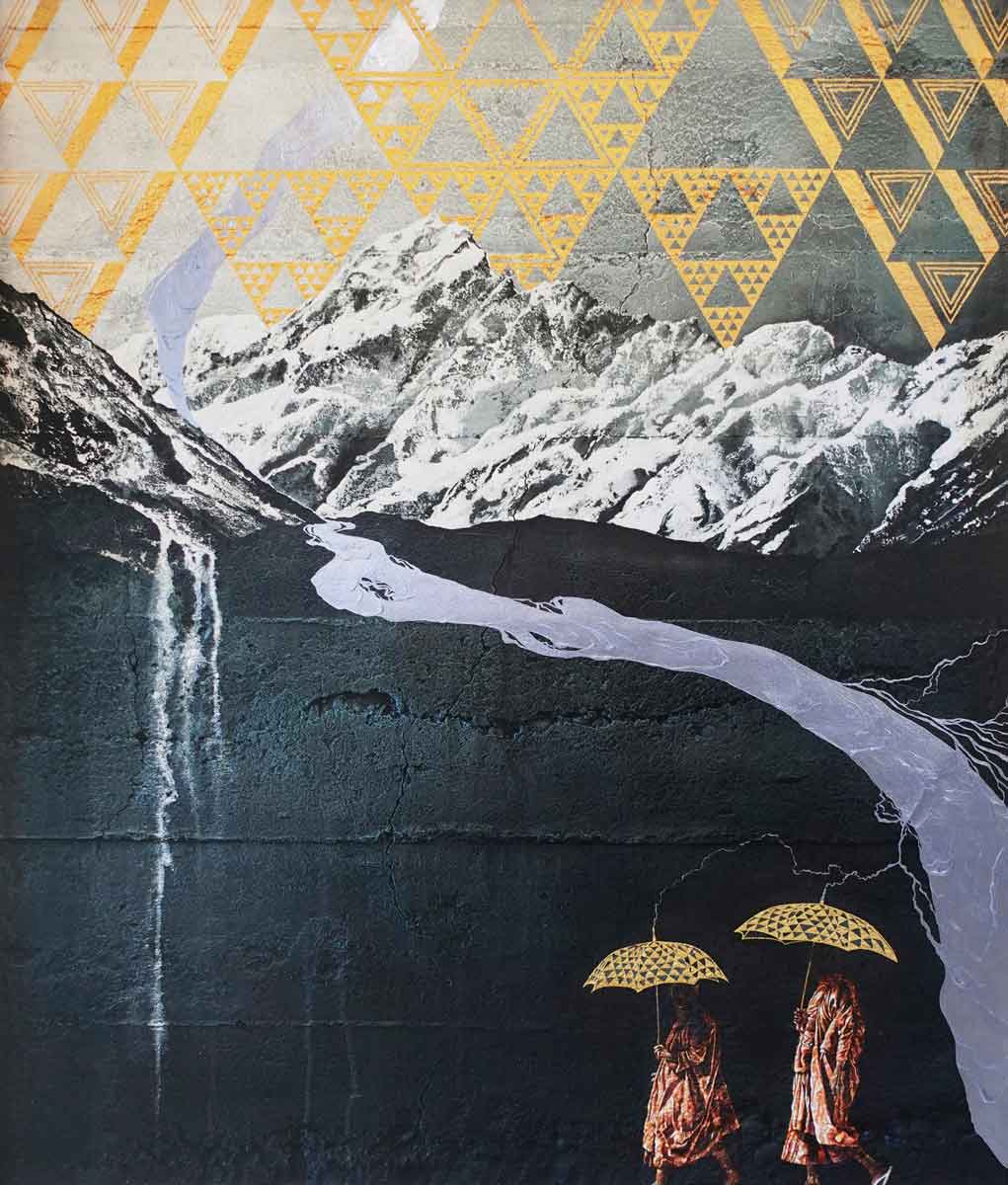
Sacred Land and Water
In this Waiora expression of Aoraki Fractalis, Sofia Minson explores the profound sacredness linking land and water. The commanding presence of Aoraki (Mount Cook) harmoniously intertwines with the fluidity of a river (awa), symbolising the continuous flow of life, ancestral wisdom, and natural harmony.
Eternal Dance of Change
The painting’s intricate fractal patterns and sacred geometry depict the delicate dance between permanence and change, reflecting life's cyclical nature and constant evolution. Like the river that gently shapes the terrain, experiences and memories carve pathways within us, transforming our inner landscapes.
Spiritual Reflection and Ancestral Roots
This artwork encapsulates the essence of Waiora, representing spiritual wellbeing, purity, and connection through its dynamic balance of stillness and motion, inviting the viewer to reflect upon their personal journey and ancestral roots. Gentle saffron-robed monks appear serenely along the riverbank, symbolising the quiet human quest for deeper understanding and spiritual connection.
Add Aoraki Fractalis - Sacred Connections to your art collection
The Navigators - Journey and Discovery
1-of-1 Repaint Limited Edition
Size: 870 x 1180mm (unframed)
Only one available | NZ$28,750
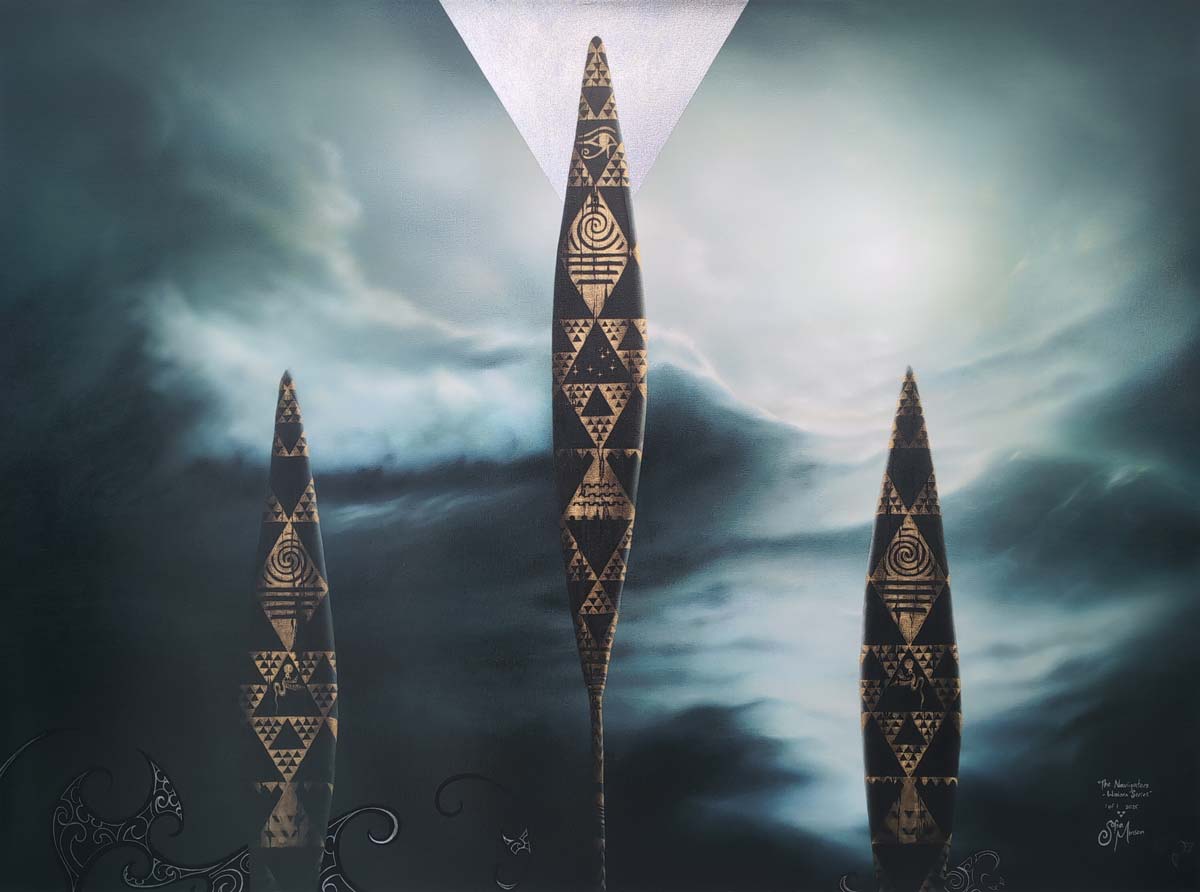
Voyage of Discovery and Connection
In the Waiora Series interpretation of The Navigators, Sofia Minson honours the ancestral spirit of exploration and resilience. Symbolising brave ocean voyages guided by celestial navigation, this artwork deeply resonates with Waiora themes of spiritual wellbeing and interconnectedness.
Cultural Intertwining
Rich Māori, Egyptian, and universal symbolism within the paddles celebrate humanity's interwoven journeys, highlighting our collective resilience and shared narratives. The presence of the Feathered Serpent motif connects global cultures, prompting deeper reflection on humanity's universal myths and shared psychological heritage.
Ancestral Wisdom and Spiritual Navigation
Central to the piece is Matariki, the Pleiades constellation, symbolising renewal and the Māori New Year. The V-shaped formation crowning the top paddle suggests energy emanating from the crown chakra, symbolising spiritual awakening and higher consciousness. Intricate koru patterns along the bottom of the artwork represent continual growth, renewal, and life's dynamic flow. Together, these elements embody spiritual guidance and navigation through life’s complexities, encouraging introspection and inner discovery aligned with Waiora's essence.
Add The Navigators - Journey and Discovery to your art collection
Add a Waiora Series 1-of-1 to your private collection: Secured with a 10% deposit.
Portraits
Sofia’s portraits embrace diverse cultural elements with dignity, graciously weaving Māori, European, Eastern and Egyptian traditions and myths together.
Click here to view the collection of canvas portrait prints
Sophia
1130mm high x 1130mm wide (unframed)
Only a couple of Artist Proofs left | NZ$8,750

Sophia is the Gnostic goddess of wisdom.
Wearing Victorian dress and moko kauae (Maori chin tattoo) this woman presents a stable centre of self in the presence of both Western tradition and ancient Māori tradition. She is a wahine toa (courageous woman) and her sword is a call to the hero's journey, to become the hero of one's own myth.
"We're not on our journey to save the world but to save ourselves. But in doing that you save the world. The influence of a vital person vitalises."
- Joseph Campbell
Embracing diverse cultural elements
Her face is from my imagination, based on hundreds of 19th and 20th century black and white photos of Māori as well as my own tupuna (ancestors). She has become something entirely new in the creative process.
I am Swedish, Irish, Māori, Scottish and English and have lived periods of my life here in Aotearoa as well as overseas in Samoa, Sri Lanka and China.
I find this portrait inspirational in terms of embracing diverse cultural elements with dignity. She has reintegrated the traditions on her own terms, with higher self-knowledge.
Integrity in spite of the conflict
This painting presents a challenge to ancestral voices from the past. The goal is to distinguish one's own true inner guidance from guilt, obligation and inherited social programming that no longer serves. Conflicting advice, histories, tikanga and rules can sometimes feel like an impossible situation to navigate. And yet within this portrait there is integrity and wisdom in her eyes. She doesn't seem swayed by everyone else's opinions but embodies mana wāhine (the divine feminine).
Victorian Dress
Her Victorian dress is stifling with its tight, buttoned corset. It is impractical with its extra folds of heavy material and yet the form is undeniably beautiful. It creates a gorgeous shape. Equally beautiful is the ornate, golden floral wallpaper design.
Moko Kauae (chin tattoo)
She strikingly wears moko kauae, traditional Māori tattoo carved into her lips and chin, signifying mana and status. The colour of the ink mirrors her pounamu (greenstone) earrings. Tā moko is an indelible, outward sign of an inner, spiritual link to one's roots. This is particularly acute for those who wear moko in the 21st century.
The Hero's Journey
On the Hero's path, Joseph Campbell has this to say:
"Where we had thought to slay another
we shall slay ourselves.
Where we had thought to travel outwards
we shall come to the centre of our own existence.
And where we had thought to be alone
we shall be with all the world."
Sophia's Sword
Her ornately detailed sword is an outward expression of defiance. Yet its true value is its invocation of inner power. The symbols adorning the golden handle point to an inward alchemical journey of consciousness transformation, heightened intuition and wisdom.
Organic curved koru designs at the base of the sword's handle symbolise rebirth, growth and feminine flowing energy.
They lead into sharp triangular patterns on both sides of the handle, which resemble the Egyptian hieroglyph for water. Water and oceans are mysterious places of the deep and can be interpreted as realms of chaos and potentiality.
Energy, unification and balance
Partially in view below her fingers is the Star of David or the Merkabah made of two intersecting triangles. This is the sacred geometric symbol for Metatron's Cube, which, beyond two dimensions is a complex oscillating energy field that can surround and transport beings through dimensions.
Winding upward are the dual Caduceus serpents indicating wisdom, wellness and mastery through the unification of opposites.
They pass by a Christian cross, which is the perfect balance of divine vertical orientation and the horizontal manifested realms.
Facing chaos
The dual serpents rise up, like Kundalini energy rising up the spine. In Tantric practices the goal is for this energy to reach the pineal gland situated at the third eye, and activate ultimate creative power and connection with The All, symbolised here as the Flower of Life pattern.
The idea is to face chaos in our own lives voluntarily and through the integration of light and dark within ourselves, transform our awareness to higher levels of creativity and connection.
The Gnostic Myth of Sophia
The goddess Sophia is wisdom. She is the divine feminine and God manifest. God is Source and the Goddess is the emanation or the play of God. In other words, the Goddess is the world. Sophia's story is a parable for the plight of the lost human soul seeking Gnosis, or God-consciousness. Sophia is the soul. Christ is that which enlightens the soul.
In the beginning was pure unmanifest consciousness and it was aware. Gnostics called it All That Is. With neither gender nor form, All That Is emanated pairs of Aeons to play various roles in creation.
Sophia was the original female principal. She found herself separated from Source and grew fearful. She felt exiled, lost in this lesser place. Wandering through the world of matter created by her own fear and confusion, Sophia suffered. She was a "fallen woman" for years beyond counting, longing to return to All That Is.
Eventually, All That Is took pity on her and sent out her other half, so that she might once again see the light. As her paired Aeon and saviour, Christ rescued her from the physical world. He gathered her up into Gnosis (knowledge of the divine) so that she remembered herself.
Living a mortal tale
Sophia's story is our own mortal tale. We seem doomed to wander alone through the world of matter. We don't know where we're going, why we're here or who we are. We're afraid and push ourselves further into matter to escape the aching feeling that we have lost our home.
The Goddess Sophia not only created matter, she lived in it to show us we are not alone in our suffering. Christ, her partner and equal, is Gnosis, who comes if we call.
Add Sophia to your art collection
Horus
840mm high x 1361mm wide (unframed)
Only a couple of Artist Proofs left | NZ$8750

This portrait of a young man with a bow tie and bowler hat fuses Western, Māori and Egyptian traditions together.
Horus is part of Sofia Minson's series of work entitled The Navigators.
His form was inspired by dozens of 19th-century black and white photographs of Māori, pieced together to become something entirely new in the process.
A stark contrast
The Victorian outfit is in stark contrast to his Moko Kanohi (face tattoo). Moko is an indelible link to whakapapa (lineage), going all the way back to cosmic origins.
Aotearoa's colonial period, in which Maori and British clashed, was handed to younger generations who had no choice but to transform it and make the best of their lives in a new world.
This man has great mana or dignity. He looks as though he has taken the pain and competing traditions of the past and created a new stable centre of Self for the future. This is a spiritual, alchemical evolution.
Son of Osiris and Isis
In this way, I see him as embodying the myth of Horus, the falcon-headed god in ancient Egypt. The son of Osiris and Isis.
Osiris was a great king who represented the establishment of the Egyptian state. Like all institutions he became old and willfully blind, refusing to see new dangers and adapting with the times.
Osiris turned a blind eye to Seth, his evil brother, who was plotting to take the reigns of the kingdom. When Osiris wasn't paying attention, Seth attacked the old king, chopping him into many pieces and distributing them all over Egypt.
The creation of Horus
But Osiris can never be completely destroyed. The spirit of Osiris, which is culture and tradition, is in all the pieces.
Isis is the queen of the underworld. She is the chaos that emerged when Egypt was struggling and adrift without their king. She found the phallus of Osiris and impregnated herself, giving birth to Horus.
Seeing with perspective
Horus has the crucial ability to see with perspective, like a falcon in flight. He is the son of the great mother and father - a messianic figure who parallels Christ. Horus grew up outside the kingdom in the underworld with his mother, alienated from his fundamental culture. This is the classic story of childhood and adolescence.
He decided to battle his uncle Seth to try and get the kingdom back. He won but in the process, his eye was ripped out. The hero's journey across cultures and throughout time seems to suggest that it is far better to face evil and "slay the dragon" voluntarily, but even still, you are bound to get injured.
An embodiment of the past and present
Horus went down to the underworld and gave the old, blind king his eye. Together, they returned to the world, embodying the best of past and present. The pharaoh represents this Osiris and Horus partnership. The ruler must be awake to malevolence and revitalise the traditions of his ancestors.
The figure of the restored eye of Horus (the wedjat eye) became a powerful symbol of heightened awareness and inner vision.
Explaining the hieroglyph
The gold zigzag pattern coming across Horus' face is the hieroglyph for water. The ocean is a mysterious world of the deep. Here it represents Horus' trip to the underworld to return sight to his father.
The winged, falcon-headed god Horus in this symbol carries the eye of wedjat, lead by a uraeus (rearing cobra). The serpent is symbolic of kundalini energy rising through the spine activating the third eye.
Horus' moko
The vertical laddering effect of the moko references woven tukutuku panels in marae (meeting houses) and suggests a pathway between our realm and the gods.
The laddering is interrupted in places with curved, koru patterns. These are yin (feminine) in nature, representing the unfolding creation of the material world. As Christ on the centre of the cross, the idea is to be both vertically aligned towards divinity and horizontally connected to this earthly realm.
Add Horus to your art collection
The Hero's Journey
930mm high x 1395mm wide (unframed)
Limited edition of 95 | NZ8750

"We're not on our journey to save the world but to save ourselves. But in doing that you save the world. The influence of a vital person vitalises."
- Joseph Campbell
This portrait of a wahine toa (courageous woman) is a call to the hero's journey, to become the hero of one's own myth.
The woman is surrounded by both Western tradition and ancient Maori tradition.
This painting took over one year to complete. I finally put down the brushes and interpreted the symbols in relation to my own life.
Incorporating diverse cultures
There is both defiance and incorporation of Western and Māori cultural influences. I am Swedish, Irish, Māori, Scottish and English and have lived periods of my life here in Aotearoa as well as overseas in Samoa, Sri Lanka and China.
Navigating different customs
Within the portrait there seems to be a process of challenging all of the ancestral voices from the past. Their conflicting advice, histories, tikanga and rules can sometimes feel like an impossible situation to navigate. And yet there is composure and wisdom in her eyes. She doesn't seem overwhelmed but embodies mana wāhine (the divine feminine).
She wears all the various cultural elements with such dignity. She has reintegrated the traditions on her own terms, with higher self-knowledge.
Victorian Dress
The Victorian dress is stifling with its tight, buttoned corset. It is impractical with its extra folds of heavy material and hump at the back. And yet the form is undeniably beautiful. It creates a gorgeous shape. Equally beautiful is the ornate, golden floral wallpaper design.
She strikingly wears moko kauae, traditional Māori tattoo carved into her lips and chin, signifying mana and status. The colour of the ink mirrors her pounamu (greenstone) earrings. Tā moko is an indelible, outward sign of an inner, spiritual link to one's roots. This is particularly true for those who wear moko in the 21st century.
The top hat is trimmed with tāniko designs, fusing an English cultural symbol with a Māori one. Both top hat and tāniko are associated with adding decoration to formal dress.
Her taiaha
The carved wooden taiaha she holds is a traditional weapon. Its sharp point features an arero (tongue) poking out beyond the mouth - an expression of defiance.
Taking up the lower third of the background is a silhouette of Mt Hikurangi in gold. Hikurangi is the sacred maunga (mountain) of Ngāti Porou, Sofia's iwi (people). As the highest point on the East Cape of the North Island, Hikurangi is the first place in Aotearoa to see the sun every day.
The royal blue of her dress is the colour of the sixth chakra in Hinduism. It is the third eye, associated with seeing beyond the capability of the eyes. Royal blue is the colour of synthesis. Of assembling seemingly separate, unrelated criteria into a complete or whole understanding. It is like knowing, but not knowing how you know. It evokes intuition, perception and inner wisdom.
On the Hero's path, Joseph Campbell has this to say:
"We have not even to risk the adventure alone
for the heroes of all time have gone before us.
The labyrinth is thoroughly known ...
we have only to follow the thread of the hero path.
And where we had thought to find an abomination
we shall find a God.
And where we had thought to slay another
we shall slay ourselves.
Where we had thought to travel outwards
we shall come to the centre of our own existence.
And where we had thought to be alone
we shall be with all the world."
Add The Hero's Journey to your art collection
Ranginui
1361mm high x 840mm wide (unframed)
Limited edition of 95 | NZ$8,750

The story of Ranginui
In the months leading up to the 2017 Sacred Mirrors exhibition...
I had painted a number of cross-cultural mythological goddesses. I began thinking that Mana Wāhine or the Divine Feminine must be the central theme for this whole series of work.
I unwrapped my next pristine white canvas and sat it up on the easel horizontally. I was ready to imagine and uncover the potential for this new artwork. Low and behold the message was clear.
The vision was for a very light, black and white meditative portrait of a rangatira (Maori chief). There was to be a large area of white canvas left uninterrupted to allow space for the mind.
Creative discernment
It felt absolutely right and a sense of equilibrium came to me. The masculine and feminine elements in this series were beautifully balancing themselves out. I try to not consciously force things in the studio. I do my best to ignore demands and judgements from my own ego or other people. I just let the fun of the creative process take over. I always tell myself that if it doesn't feel like play, you're taking yourself too seriously! The lack of judgement does not mean lack of discernment however. There is still countless hours spent honing the skill of the craft.
More than a mortal chief
It was not apparent at the beginning of this painting that the old man would embody qualities of the sky father Ranginui. But as he took shape it became obvious that he was representing more than a mortal chief. He was a god-like father figure and and was transmitting light.
The Story of Creation
The whakapapa (genealogy) of Ranginui as I understand it is that first there is Te Kore, the formless void. It is unlimited potential for being. From that womb of emptiness comes Te Pō, the night that lasts for aeons. A slow dawning conception of light seeds itself in the prevailing darkness. Moisture emerges and couples with a cloud that grew from the dawn. From this union comes the twelve heavens of Rangi. Ranginui, the sky above is the heaven nearest to earth, his lover Papatūānuku.
Inspiration and dress
The form of this portrait was inspired by the hundreds of black and white 19th and 20th century photographs of Maori that I have studied over the years. Historical portraits by C.F. Goldie and Gottfried Lindauer were also inspirational.
Here, Ranginui has the indelible mark of Ta Moko Kanohi - full face tattoo - encoding his whakapapa (genealogy). He wears a woven korowai (cloak) painted in metallic gold. His pounamu heitiki pendant and pounamu and feather earring are traditional signs of mana and status.
Legend of the Huia
Two white-tipped huia feathers cross each other at the crown of his head. In myth, the huia was once a pure white bird. He was taken from the head of an atua (god) who dwelt in the highest of the twelve heavens. The humble bird was sent on a journey down through the twelve realms of Rangi to earth. His task was to relay a message to Tāne, god of all living things and progenitor of mankind. The message was that it was time for Tāne to climb the heavens to retrieve the sacred baskets of knowledge. As a gift for transmitting this important message, the atua transformed the white bird's body to black. This represented Te Kore (The Void of Potentiality) and his journey through the twelve dimensions. More feathers were added to his tail to make twelve in total and the tips were left white to mark the heavens. Lastly he received a new name - Manu Huia.
Hero, culture and nature
Deeper meanings and meta truths unfold from studying all of our human stories.
From biblical scripture to ancient mythologies from around the world, all good stories have three things in common. There is a hero. And the hero lives within the known dimension of culture.
Culture is nested in the unknown realm of nature. Our shared human evolution of body and mind inextricably bonds us together. It reveals itself through patterns in our storytelling.
Wisdom and evolution
On the level of mythological archetypes, I get a sense of this portrait being an old king upholding tradition. He is a wise chief of a culture that has been formed by ancestors who are long gone from this world. But he is clearly not representing a blind, rigid, crumbling structure. He is imbued with vision, flexibility and animation. Those qualities can only come from this current generation of heroes. He is a positive symbol of the wisdom and evolution that our culture should strive for.
He embraces past, present and future.
Add Ranginui to your art collection
Heavenly Bodies
840mm high x 1361mm wide (unframed)
Limited edition of 175 | NZ$3,750

The story of Heavenly Bodies
Te Whānau Mārama is The Family of Heavenly Bodies. These are the celestial lights of the sun, moon, stars, phosphorous light, gloomy light and the smallest star in the sky.
In the Māori creation story, Ranginui (sky father) and Papatūānuku (earth mother) were joined in a close embrace. Their 70 sons lived in the darkness between them. Their strongest son, Tāne-nui-a-rangi (Tāne of the heavens, who is also the progenitor of humankind), pushed his parents apart. He then hunted for a source of light for the world created by their separation.
Tāne found Hinerauāmoa, the smallest and most fragile star in the sky. She was also the female element he'd been searching for to create humankind. From their union came Hine-te-iwaiwa.
The first woman, the first human
This portrait is of Hine-te-iwaiwa, the guardian of weaving, childbirth, and the cycles of the moon. She is also Papatūānuku, and represents our own relationship with the Heavenly Bodies. Papatūānuku is the clay from which our ancestor Hineahuone, the first woman, the first human, was formed and given the breath of life by Tāne. The background colour of the painting is that of earthen clay.
The form of this portrait was inspired by dozens of 19th-century black and white photographs of Māori, pieced together to become something entirely new in the process.
Cosmic whakapapa
She wears a pounamu tiki pendant, which is the male element. Her moko kauae (chin and forehead tattoo) is an indelible link to her cosmic whakapapa (lineage). She wears a korowai (cloak) with golden tāniko designs that are traditionally woven into the borders of fine garments.
The karearea (NZ falcon) feathers in her hair suggest the importance of acute vision and perspective. Her eyelids are lowered meaning the sight is not outward but rather inward.
The huia feathers suggest ascension of consciousness. Manu huia travelled through the Twelve Heavens from the uppermost to our earthly realm. He was charged with delivering a message to Tāne, that it was time for him to come and receive the baskets of knowledge.
Divinity and manifestation
The overall composition forms a cross. Her power and vision exist in the tension between the vertical pull of divinity and the horizontal pull of manifestation on this earthly plane. The most illuminated point is in the full circle at her third eye. The phases of the moon cycle into lesser and lesser light, the further away from the centre you go.
If we serve only God-consciousness, we become disembodied spirits, adrift in an unreal world, and if we serve only matter, we become gluttonous and lack vitality. As Jesus on the centre of the cross, the call is to be equally aligned towards divinity and connected to this earthly realm.
Add Heavenly Bodies to your art collection
View full portrait gallery
Museum canvas prints by Sofia Minson
Sofia’s limited edition canvas prints are created in New Zealand using high-quality, lightfast pigments.
Limited Edition Numbers
- The edition number, title of the piece and the artist name are hand-written on the print.
- To protect your fine art investment, have the print stretched and framed, and avoid displaying in direct sunlight.
- With clear protective museum coating, glass covering the artwork is optional.
Landscape and Nature
Sofia’s landscapes are representative of New Zealand in their depiction of the detailed mountain ranges, sandy shores and mystical forests that she associates with home.
Click here to view the collection of landscape and nature prints.
Te Waka a Māui
840mm high x 1548mm wide (unframed)
Limited edition of 275 | NZ$3,750

Aoraki Raama
1138mm high x 950mm wide (unframed)
Limited edition of 95 | NZ$8,000

Midnight Rose
1130mm high x 1130mm wide (unframed)
Limited edition of 275 | NZ$3,750

View full landscape and nature gallery
Museum canvas prints by Sofia Minson
Museum Canvas Print Process
- 1.The artwork is printed in New Zealand using museum archival pigmented inks on canvas.
- 2.This is left for 48 hours, allowing the ink to cure with the high-quality canvas and settle.
- 3.The canvas is then hung, sprayed with a clear protective varnish and left to dry.
- 4.Once the artwork is ready with Sofia's stamp of approval it is rolled and placed in an art protective tube.
- 5.Ready for delivery worldwide.
Animals and Birds
Sofia is a firm believer in keeping in tune with the natural world and sees the human race as guardians who must work to protect it. This is an idea that she has in mind whenever she paints birds and animals.
Click here to view the collection of animals and birds prints.
The Heart of the Kākā
1361mm high x 840mm wide (unframed)
Limited edition of 175 | NZ$3,750

Ruru
840mm high x 1360mm wide (unframed)
Limited to 175 | NZ$3,750

Tuihana
1402mm high x 920mm wide (unframed)
Limited edition of 95 | NZ$8,750

View full animals and birds gallery
The Visual Impact of an Original Painting
Sofia’s limited-edition canvas prints are of the highest standard fine art reproductions available in the world.
You can choose to display as a stretched canvas or with your choice of beautiful decorative frame.
Available on Canvas
"I'm making sacred art that integrates our modern human experience with the wisdom of our ancestors. These are aspirational symbols to help us navigate this strange new world."
- Sofia Minson
Art with the size and impact of an original
Hand-signed limited edition prints on textured canvas
- Premium high quality canvas with a clear protective coating
- No glass required
- Hand-signed and numbered by Sofia Minson
- A piece of art that will last for generations
- Shipped anywhere in the world
NZ and International Shipping
Sofia Minson ships your new canvas artwork in a protective art tube for $25.00 in
New Zealand and from $100.00 internationally via track and trace art handling
air freight.
Your new artwork is ready for delivery within 10 business days.
Browse the range of museum canvas prints
Buy online from our store www.newzealandartwork.com
Sofia Minson Art
Office: Kindred Complex, 104 Moir Street, Mangawhai, New Zealand
art@sofiaminson.com
+64-9-390-1555
Shipping art worldwide since 2004
